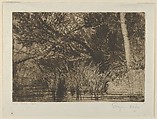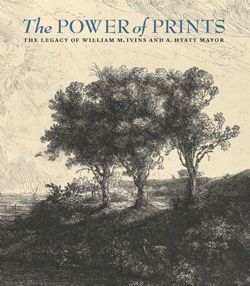The Mouth of a Brook, No. 1
Sir Francis Seymour Haden British
Not on view
Seymour Haden was the unlikely combination of a surgeon and an etcher. Although he pursued a very successful medical career, he is mostly remembered for his etched work as well as for his writings on etching. He was one of a group of artists, including James McNeill Whistler (1834–1903) and Alphonse Legros (1837–1911), whose passionate interest in the medium led to the so-called etching revival, a period that lasted well into the twentieth century. The extolling of etching for its inherent spontaneous qualities reached its pinnacle during this time. While the line of the etching needle, Haden wrote, was "free, expressive, full of vivacity," that of the burin was "cold, constrained, uninteresting," and "without identity.
"State I (Da,Ha). A close-up view of a brook with heavily overgrown bank. There is foul-biting in the lower right. With the annotation 'S. Haden 1859' (E, l.l.)."
[Source: Schneiderman, p. 93]
"Trial proofs: (a) Size as above. 'S. Haden 1859' in left lower corner. Four impressions only had been printed, when, the plate having been laid aside for some time, the larger portion of it became spoiled by oxidation. Colls. Lenox Library, New York; and H.H. Benedict. Exhibited at the Royal Academy, 1861."
[Source: Harrington, p. 13]
Due to rights restrictions, this image cannot be enlarged, viewed at full screen, or downloaded.



